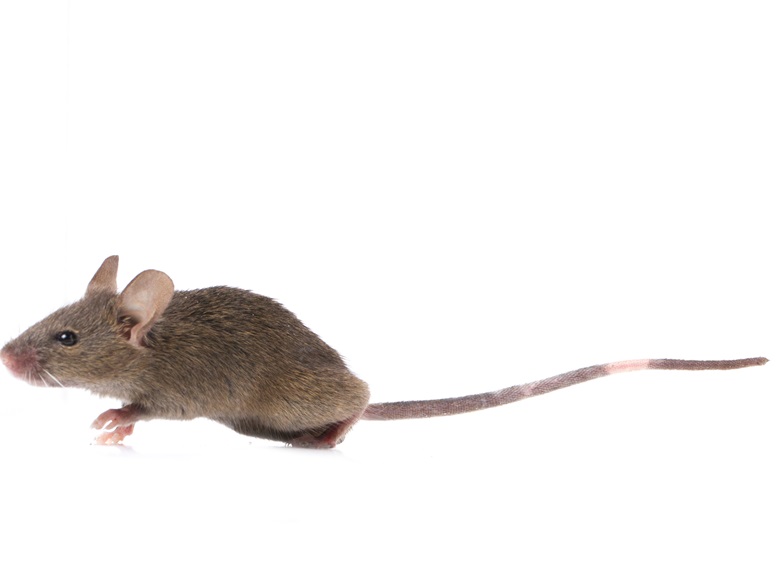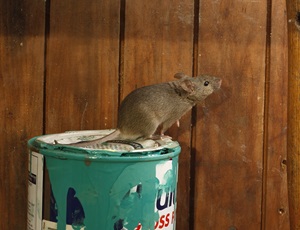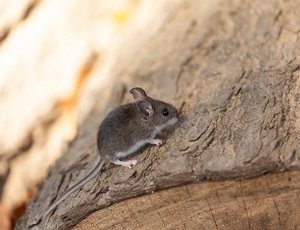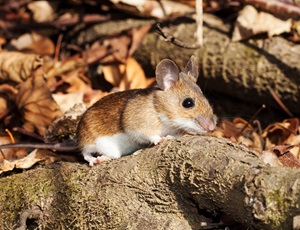- Mice are a public health risk and can cause property damage.
- We explain how to find and prevent mice in hotels, motels and other lodging.
Mice
See our resources to detect and prevent mice.
Overview

Identification
House mouse

What to know:
- Most common type
- Round shape
- Gray, tan brown with lighter belly
- Body is 2.5 to 3.75 inches long
Deer mouse

What to know:
- Gray or brown with white underbelly and small legs.
- Body is 2 to 3.5 inches long.
- Tail is as long as body and has a color difference between the top and bottom.
White-footed deer mouse

What to know:
- Gray/brown color with white belly and legs.
- Larger hind legs.
- Bicolored tail.
- Body is 3 to 4 inches long.
Problems mice cause
Public health risks
- Mice can carry ticks and fleas.
- Mice contaminate food, food packaging and surfaces in a business.
- People can get sick by coming into contact with mice urine, feces, saliva, and nesting materials while cleaning or breathing in airborne particles.
- Improper cleaning of mice droppings and urine can lead to illness.
Transmissible diseases
- Hanta virus
- Salmonellosis
- Tapeworms
- Plague
Damage and contamination
- Mice can cause property damage by gnawing on wires, furniture and clothing.
- Mice urinate, poop and gnaw as they move throughout the building or house. An average mouse can produce 50 droppings a day.
- Mice walk over and contaminate food surfaces.
Traits
- Mice are highly adaptable. They can be found in multiple environments and building types.
- Mice reproduce very quickly. Adult females can have up to 30 to 35 offspring per year.
- Mice can squeeze through holes 1/4 of an inch or bigger, jump 12 inches and are great climbers.
- Mice often come into buildings and houses when temperatures get colder and there is little food outside.
Infestation
Signs:
- Mouse droppings throughout facility
- Urine staining (use a blacklight for better visibility)
- Gnawed doorways and/or food packaging (look for spilled foods)
- Mouse tracks in areas with heavy debris, dust or mud
- Rub marks on walls in heavily traveled areas
- Musty, pungent odor
Prevention
Exterior
- Seal all holes or gaps with areas larger than 1/4 inch on outside of buildings.
- Create a 3-foot clearing around exterior walls of building. Adding a gravel strip may help.
- Maintain outdoor areas clean and free of clutter.
- Keep lids to disposal bins closed.
- Keep bushes and shrubbery trimmed.
Interior
Watch for signs of mouse activity as seasons change and monitor any troublesome areas.
Cleaning
- Remove cardboard and clutter from rooms to avoid harborage conditions.
- Maintain areas free of food debris
Physical facilities
- Seal all electrical conduits, heating ducts, pipes, and pipe chases.
- Install door sweeps and other devices to seal any holes or cracks leading to outside.
- Provide routine maintenance and spot checks to all areas of building to prevent mice getting in.
Pest control
- Work with pest control company to determine a regular schedule that fits your building.
- Call a professional extermination company if you suspect there are mice within your facility.
Resources
Learn about rodents from:
Report an issue
Contact us
Environmental Health
Minneapolis Health Department
Phone
Address
Public Service Building
505 Fourth Ave. S., Room 520
Minneapolis, MN 55415

